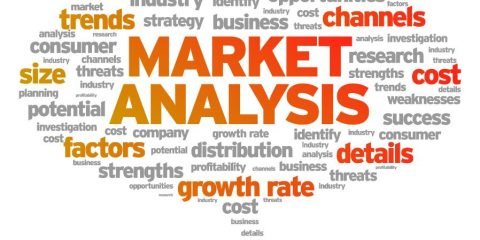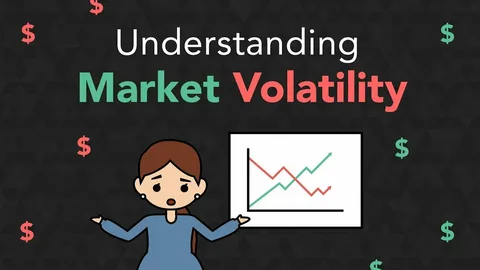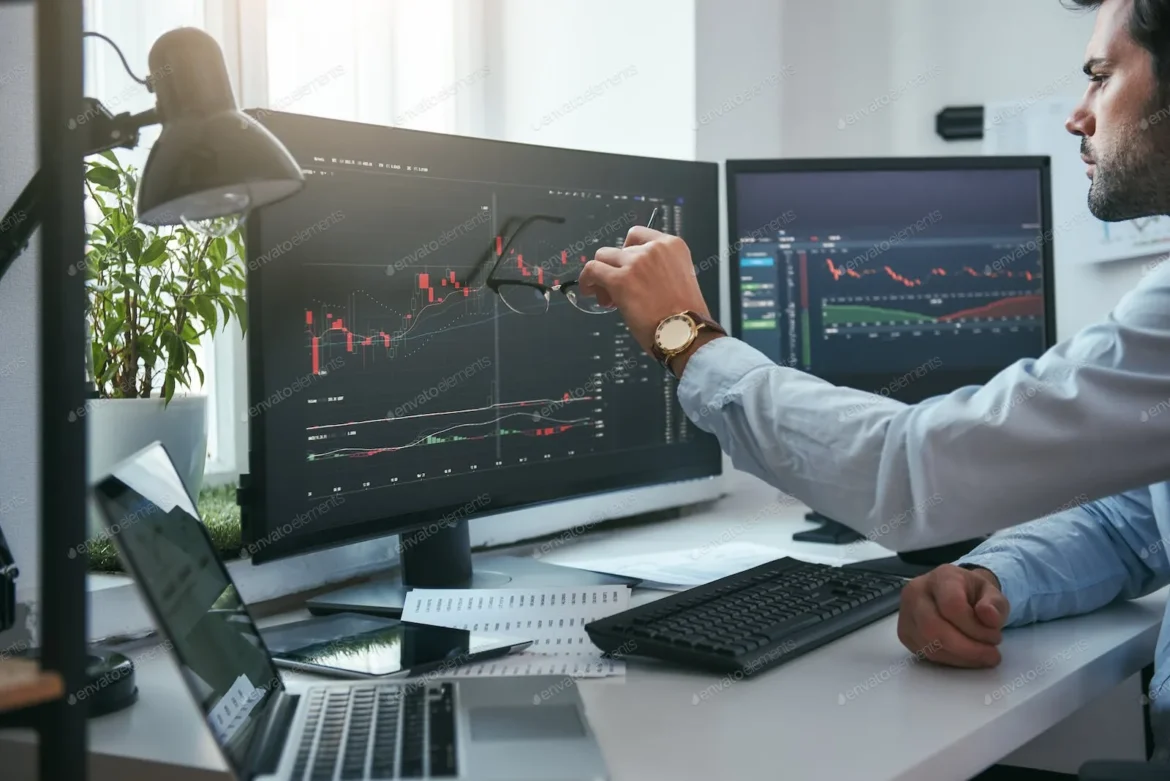How to Identify Forex Trading Opportunities
Forex trading is vast and involves a lot of opportunities for everyone who takes part in it. However, it is not easy to notice these opportunities, especially for newcomers to the market. Professionals in trading are those individuals who can identify good trading signals, prevailing market trends, or just the right tools to analyze economic factors. In the following tutorial, you will learn the key points to capturing Forex trading opportunities and gaining higher possibilities in the stock exchange market.
Understanding Market Trends

Predicting trading opportunities in the foreign exchange market is one of the most important areas in the direction of Forex. Trend simply means the general movement in which the price of a given currency pair moves in a particular period. Bullish, bearish, and sideways tendencies are typical kinds of tendencies. When you identify the origin and direction of the movement, you will be able to exploit the movement, which, in this case, is in the same direction as the market momentum. Several traders employ trendlines, simple and exponential moving averages, and all the other indicators to get stronger signals regarding trends for taking the entries or exits in the trades.
Analyzing Fundamental Factors
Analyzing the basic trends is essential when searching for Forex trading opportunities. Gross domestic product analysis is a process of assessing the financial stability of the countries and their reflection in their currencies. The price of currencies is, by and large, highly sensitive to factors such as interest rates, inflation, unemployment, and the GDP growth rate. You can forecast the market and find certain opportunities by paying attention to global economic events, monetary policies, and other macro depressions and geopolitical issues. The most frequently accessed information is probably traders’ economic calendars, which show all key events and news releases that impact the currencies.
Utilizing Technical Analysis
A similar fundamental method that determines Forex trading opportunities is the technical approach. This method involves reviewing the price charts and employing various signaling devices to determine future price direction. They include moving averages, Relative Strength Index (RSI), Fibonacci retracement, and Bollinger Bands. By analyzing past prices and identifying certain patterns, a trader should know when the market will most likely reverse or the trend will continue. As a branch of analysis, technical analysis is based on discovering the market’s psychological state and determining possible signals for purchases and sales.
Recognizing Support and Resistance Levels
Fundamental levels such as support and resistance are significant principles in Forex trading when trying to establish an opening. Support is the price level in a specific commodity that attracts strong buying to discourage further price decline. At the same time, resistance is the price level in a specific commodity that gets pressurized into more selling to avoid further price increases. These levels are psychological, and modern traders use them to identify potential trade entries and exit points. When getting close to the support or resistance level, the price may enable the traders to provide an entry system in the current trend or a reversal of that trend.
Understanding Market Volatility

Fluctuations in price mean the relative change in the price of commodities in the market over a particular period. However, higher volatility implies larger price fluctuations than when the system has lower volatility. This means that traders can establish potential trading signals depending on whether a particular stock is volatile and the degree of that volatility. That is why, during violent price fluctuations, the number of potential deals increases dramatically, which increases the likelihood of the trader’s success. This means that low-volatility markets, although they may have fewer trading signals, could be less vulnerable to shocks. Some factors that should always be known include the extent of expected market price fluctuations to know when to enter or exit trade.
Using Economic Indicators
Various economic indicators are used to search for Forex trading signals depending on their values. These indicate the general economic status of a country, which automatically determines its currency. These are interest rates, employment reports, the consumer confidence index, and inflation rates. They employ them to assess the state of the economy in a certain country and the potential of their currency. For instance, a high interest rate will likely encourage foreign investors, leading to an appreciation of the currency. The analysis of these indicators will enable you to identify possible prospects in the Forex market.
Applying Price Action Strategies
Forex traders often employ price action trading as a way of trying to identify a trade. That is, the price of a currency pair is determined based on the fluctuation from its initial value without many features or indicators. Those professional trading techniques based on prices are charting techniques that incorporate price chart patterns, formations, and levels. This method enables the trader to process the market price data to determine trends or reversals. Price action strategies are best utilized in volatile environments since decisions must be made quickly.
Keeping an Eye on Currency Correlations
Currency relations or interactions are the nature of the relationship between two currency pairs and their behavior. There are highly correlated currencies; therefore, they rise or fall together, while there are counter. Therefore, they can fall when the other rises. Traders can use these correlations to find Forex trading trade through the diversifying of the positions and also through hedging of the trades. For instance, if two indices are likely to follow a similar trend, you may wish to participate in the same way to get the greatest result. Meanwhile, negatively correlated pairs can be utilized to minimize the risk of trading portfolios in your trading account.
Monitoring Central Bank Actions
Another major participant in the Forex market is a central bank, the policy of which directly affects the value of the currency. Fluctuations in interest rates or monetary policies can greatly affect the value of a particular currency. In trading, traders depend on the central bank statements, press releases, and any other interest rate decisions that may exist. For example, when a central bank hikes the interest rate, the value of the country’s currency increases as investors chase higher yields. Being able to look at the central bank’s activities would provide traders with proper hints and leads in the market to tools for a favorable trade.
Utilizing Sentiment Analysis

For others, sentiment analysis is defined as the measurement of the average attitude of the traders in regard to a given pair of currencies. Market sentiment can be bullish, bearish, or neutral: market sentiment is determined by news events, economic reports, and Geopolitical events, among others. When the sentiment is understood, traders can easily notice some market opportunities. For instance, if most traders are bearing a particular sentiment for a currency, then it would be a good entry point. On the other hand, if the trend is heavily negative, it could also mean it is time to sell. Using such as the Commitment of Traders (COT) report, the trader will successfully understand the views in the markets.
Identifying Reversal Patterns
Swing patterns are recognized technical indicators that suggest a near-turning point in the market. Recognizing these patterns is important for those who want a good result, partly due to the fluctuation of the traders’ mood. Reversal patterns are the head and shoulders, double tops, and double bottoms. When these patterns appear, they suggest that the pattern may not continue on its current path, and a new pattern may begin. If such patterns are noticed early, one can place an appropriate position to wait for the reversal and bank on Forex trading.
Conclusion
It would be pertinent to note that Forex trading opportunities involve applying technical and fundamental analysis, watching the market trends, and pattern recognition skills. Market analysis is done based on trends and economic data to enable traders to position themselves properly to increase their chances of making good profits through technical indicators, price action, etc. Also, awareness of the actions of the central banks, key indicators, and sentiments of the market will help identify opportunities in the Forex market. It is important to remember that Forex trading, like any type of trading, is all about preparation and the skill to read and respond to changing market indicators. If you develop these skills increasingly, you can spot forex trading opportunities and have a better probability of success in this volatile and fascinating market.



